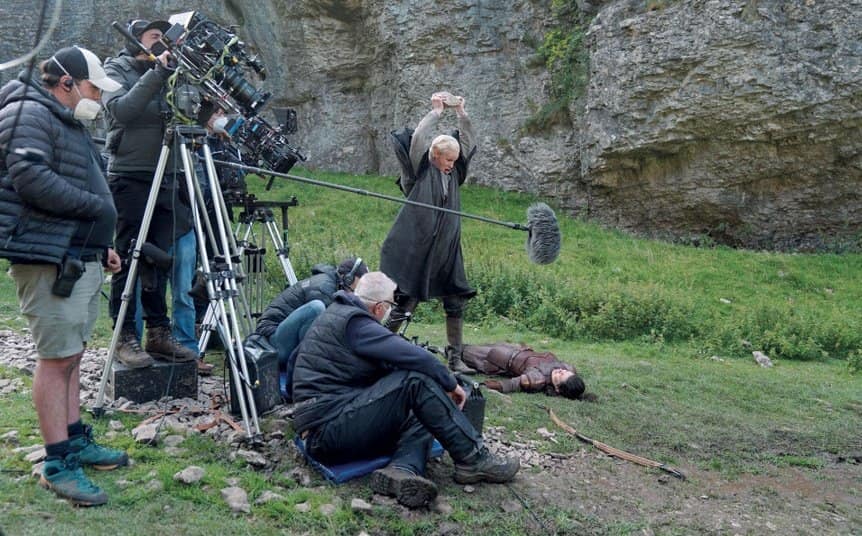Interview
House of the Dragon prosthetics designer says Viserys’ makeup was the “biggest challenge” of Season 1

Paddy Considine was the shining star of House of the Dragon, which was perhaps the finest program to premiere in 2022. Even in George R. R. Martin‘s original book, Fire & Blood, Viserys Targaryen lacked a certain depth, which Considine added as the character. Despite this restriction, Considine and the prosthetic and makeup team excelled in every element of Viserys.
House of the Dragon makeup and prosthetic artists discuss transforming actors into characters
In a recent interview with Gold Derby, the Emmy-nominated team recalled their experience on the set. Makeup department head Amanda Knight said, “It’s quite a special thing to watch all of these casts transform, and watch their whole demeanor change when they become a Targaryen.”
Prosthetics designer Barrie Gower added, “It is fascinating that when we get towards the end of the makeup application, you can really see that actor starting to become that character.”
“We Light the Way” was especially difficult for the makeup team

Knight recalled filming the fifth episode, “That was a mammoth task; we shot that over a three-week period. The minute they finished at night we’d get those white wigs off, and with all the atmosphere they have going on the set, we washed them and then they were back in again at five 0’clock the next morning, and it was everybody. It was the entire cast for every day, for three weeks.”
Maintaining Viserys’ appearance was the biggest challenge for the prosthetics department
Gower recalled preparing prosthetics for Paddy Considine in The Lord of The Tides episode, “Viserys was our biggest challenge on this season. His character, this story arc from episode one going to his demise in episode eight was going to be a really important part of the storytelling, to actually help show the passage of time, because Season 1 goes over a couple of decades or so.”
Read Next: House of the Dragon prosthetic designer talks crafting props for Viserys’ disease
-

 News7 days ago
News7 days agoRobb Stark and Talisa join the fray in Game of Thrones: Legends
-

 News3 days ago
News3 days agoLucas Aurelio has been cast in House of the Dragon Season 3 in an unknown role
-

 Interview6 days ago
Interview6 days agoMatt Smith says filming House of the Dragon isn’t easy because of the scale of the show
-

 News2 days ago
News2 days agoGeorge R.R. Martin to launch a ‘medieval style’ cocktail bar named “Milk of the Poppy”
-

 News17 hours ago
News17 hours agoGeorge R.R. Martin misses FYC event for House of the Dragon Season 3
-

 News16 hours ago
News16 hours agoGeorge R.R. Martin wouldn’t say no to In The Lost Lands sequel despite poor reviews







